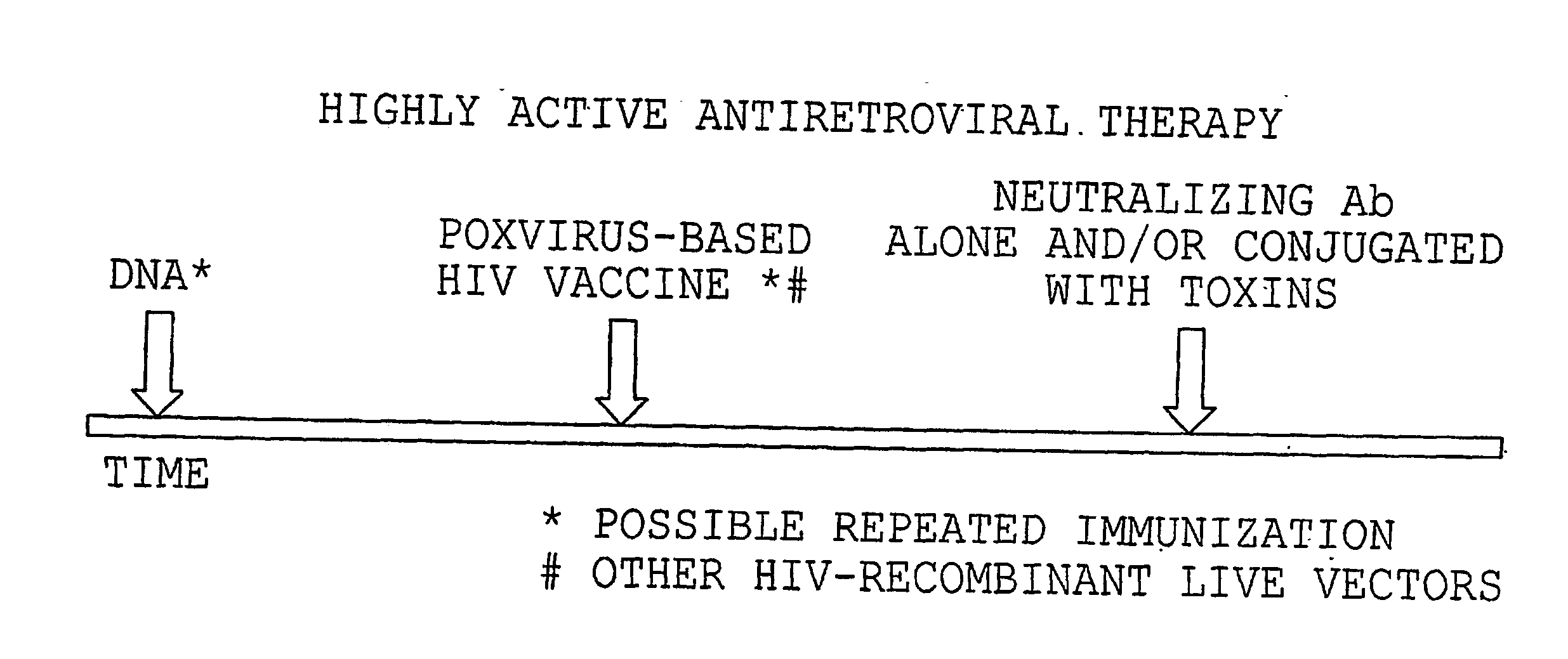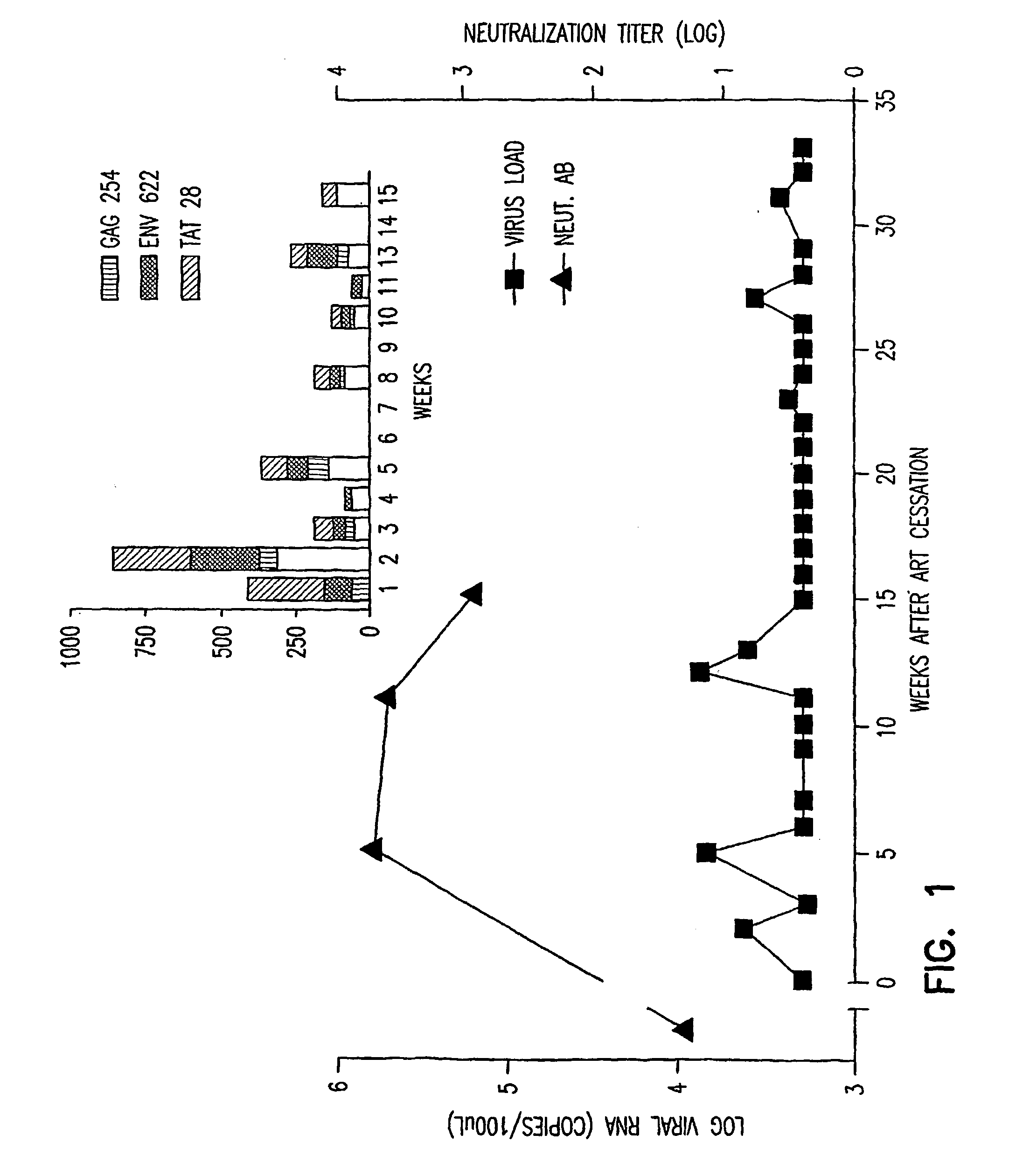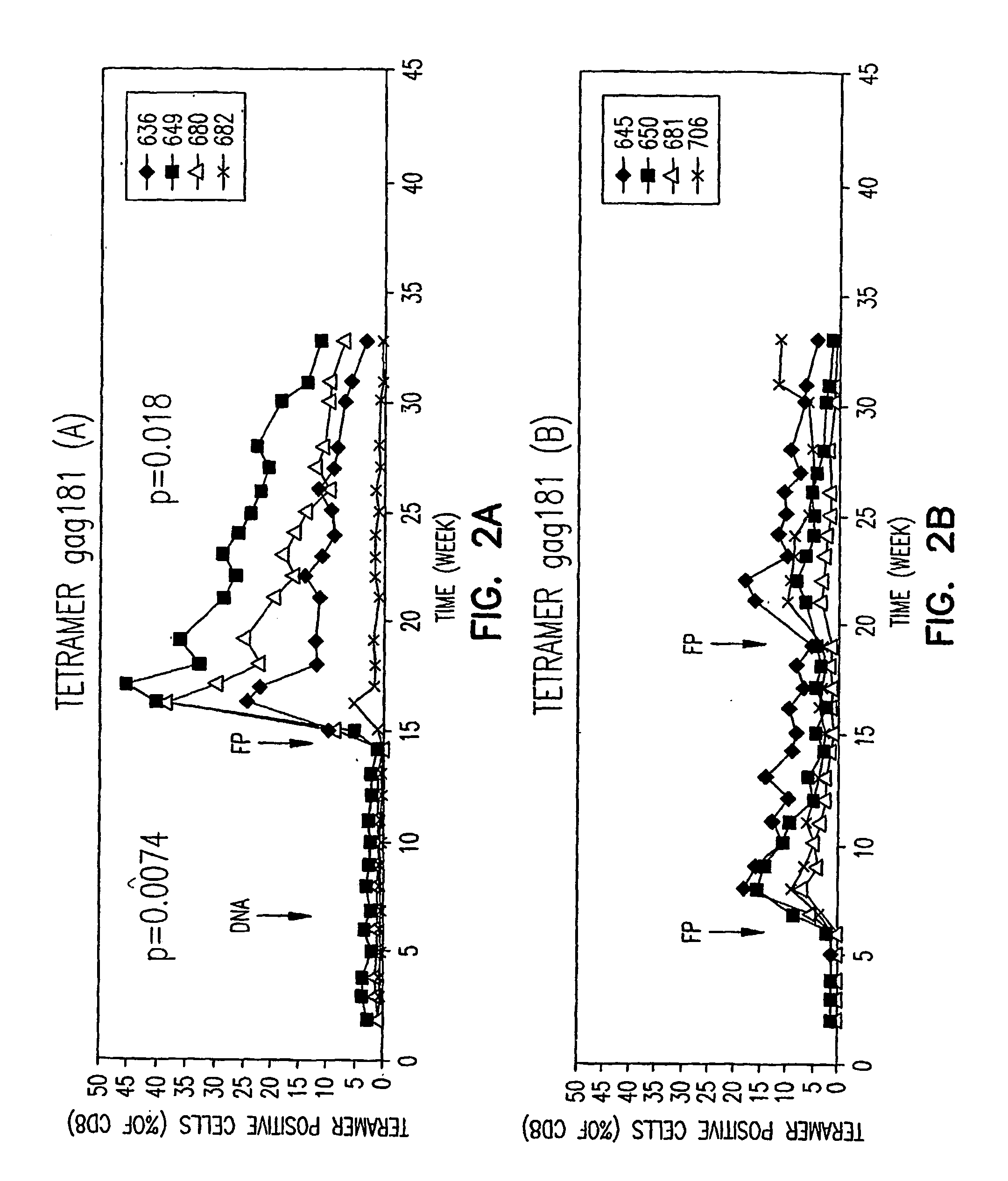Immunotherapy regimens in hiv-infected patients
a technology for hiv-infected patients and immunotherapy regimens, which is applied in the field of immunotherapy regimens, can solve the problems of not improving the protection level, affecting interpretation of results, and significantly reducing the viral replication within a few weeks of exposure in approximately 50% of the animals, so as to improve the efficacy of protocols, reduce the viral load, and increase the presence of memory cells
- Summary
- Abstract
- Description
- Claims
- Application Information
AI Technical Summary
Benefits of technology
Problems solved by technology
Method used
Image
Examples
example 1
Protocol for the Treatment of an HIV-Infected Individual Who is Treated with Anti-Retroviral Therapy
[0121] An illustration of administration of the treatment protocol of the invention is provided in FIG. 3. For example, an individual with 400 or more CD4+ T-cells / ml would be treated with HAART for a minimum of 2-3 months. DNA-HIV vaccination (up to 10 mg) would then be given, usually intramuscularly one or more times in presence of an optimal adjuvant. At the time of plateau of the immune response measured in blood (i.e., measurements of CD4+ and CD8+ responses), one or more inoculations of a poxvirus HIV vaccine would be administered intramuscularly at a dose ranging between 108 to 109. Again, when the immune response plateaus, the administration of substances able to block the infectivity of HIV will be started. Such a substance may be, for example, a cytotoxic immunoconjugate specific for HIV-infected cells, a neutralizing antibody, or other agent that blocks virus-receptor bind...
example 2
Animals and Administration Protocols
Animals
[0123] All animals will be colony-bred rhesus macaque monkeys (Macaca mulatta) obtained from Covance Research Products (Alice, Tex.). The monkeys will be housed and handled in accordance with the standards of the Association for the Assessment and Accreditation of Laboratory Animal Care International. All monkeys will initially be seronegative for SIV-1, simian T cell leukemia virus type 1, and herpesvirus B. All monkeys will be screened for the presence of the Mamu-A*01 allele by PCR and the amplified DNA will be sequenced to confirm the Mamu-A*01 status.
Inoculation with Pathogenic SIVmac251
[0124] A monkey will be inoculated intravenously with 10 TCID50 of pathogenic SIVmac251.
Anti-Retroviral Treatment (ART)
[0125] A monkey will receive subcutaneous injections of 20 mg / kg / day of PMPA ((R)-9-(2-phosphonylmethoypropyl)adenine), oral administrations of 1.2 mg / kg / day of Stravudine (d4T) divided into 2 doses daily, and intravenous administ...
example 3
Administration of DNA Vaccines, a Live Virus Vaccine, and Neutralizing Antibody to Simian Immunodeficiency Virus (SIV) Infected Monkeys Undergoing Anti-Retroviral Treatment
[0131] Monkeys will be inoculated intravenously with 10 TCID50 of pathogenic SIVmac251 on week zero. On week sixteen, each monkey will begin anti-retroviral treatment (ART) according to the above described procedure. On weeks twenty-four and thirty, each monkey will be immunized with the DNA vaccines (SIV-env and SIV-gag) according to the above described procedure. At week thirty-six, each monkey will be immunized with viral vaccine (ALVAC-SIV) according to the procedure described herein. At week forty, the neutralizing antibody (CD4-Ig2) will be administered to each monkey according to the protocol described herein. At week forty-one, the anti-retroviral treatment will be discontinued for each monkey. The protocol is represented in Table I below.
[0132] Blood and tissue samples will be collected from each monkey...
PUM
| Property | Measurement | Unit |
|---|---|---|
| Cytotoxicity | aaaaa | aaaaa |
Abstract
Description
Claims
Application Information
 Login to View More
Login to View More - R&D
- Intellectual Property
- Life Sciences
- Materials
- Tech Scout
- Unparalleled Data Quality
- Higher Quality Content
- 60% Fewer Hallucinations
Browse by: Latest US Patents, China's latest patents, Technical Efficacy Thesaurus, Application Domain, Technology Topic, Popular Technical Reports.
© 2025 PatSnap. All rights reserved.Legal|Privacy policy|Modern Slavery Act Transparency Statement|Sitemap|About US| Contact US: help@patsnap.com



